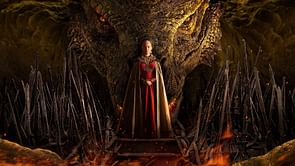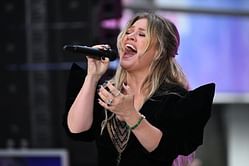
The Vale of Arryn, the Riverlands, the Stormlands, the Crownlands, the North, the Iron Islands, the Westerlands, Dorne, and the Reach are the seven kingdoms of Game of Thrones.
According to the books, seven kingdoms—the Kingdom of the North, the Kingdom of the Mountain and the Vale, the Kingdom of the Isles and the Rivers, the Kingdom of the Rock, the Kingdom of the Stormlands, the Kingdom of the Reach, and the Principality of Dorne—had existed independently for thousands of years prior to Aegon Targaryen's unification of Westeros under his rule.
And there were additional kingdoms within those kingdoms; for instance, four kingdoms used to make up The Reach. Some people refer to this time as the "Hundred Kingdoms Era."
Following Aegon's Conquest, Westeros was split up into nine provinces, each of which was a part of a larger realm: the North, the Vale of Arryn, the Iron Islands, the Riverlands, the Westerlands, the Stormlands, the Reach, the Crownlands, and Dorne. Thus, calling it the "Seven Kingdoms" became en vogue. Even though the phrase is ambiguous, it still exists.
Below is a list of the seven kingdoms, which are actually nine provinces, along with some additional information:
The North

The North is the largest region of the continent of Westeros. Torrhen Stark, referred to as "the King of Winter," was in charge on the day Aegon arrived.
Since the Age of Heroes and the Long Night, or roughly 8,000 years before Aegon's Conquest, House Stark has ruled the North. The origins of the Stark family can be traced all the way back to the First Men and the Dawn Age.
The Starks were among the first families to submit to Targaryen rule without resistance. Torrhen may be known as the "King Who Knelt," but he preserved the North, kept his family in power, and ensured the safety of his subjects.
The Ironlands

With their unique Drowned God religion and democratic Kingsmoot elections, the Iron Islands stand out from the rest of the world. They were inhabited by seafaring First Men during the Dawn Age, and the Greyirons ruled them for a while.
During the Andal era, House Hoare overthrew the Greyirons and turned their attention to the mainland, establishing "The Kingdom of Isles and Rivers" with a planned centralised administration based out of the recently constructed Harrenhal.
The first castle that Aegon's dragons destroyed, Harrenhal, was famously completed on the day of his arrival. Following the destruction of House Hoare by the Targaryens, Aegon permitted the Ironborn to hold a kingsmoot, which the Greyjoys ultimately won.
Throughout the Targaryen Empire and Robert's Rebellion, the islands remained neutral, but Balon rose up in rebellion because he believed Robert to be a weak king. After Stannis put down the rebellion in the years just before the events of Game of Thrones, Balon re-bent his knee.
The Vale

It belonged to a larger holding called "The Mountain and Vale" and was known as "The Vale of Arryn." Additionally, it was here that the Andals launched their invasion to retake the continent from the First Men. As a result, the Arryn family is one of Westeros's oldest Andal families.
When Aegon arrived, House Arryn followed the lead of the Stark family and submitted to its new Targaryen master without resistance. In exchange, Aegon agreed to include the renamed "Vale" region in the family's holdings.
The Riverlands

The Riverlands are situated in the middle of Westeros. As they feature Riverrun, The Twins, Harrenhal, and the Bloody Gate, Game of Thrones spends a lot of time in this area. It has long been contested territory because it lies in the continent's center.
The First Men expelled the Children of the Forest when they invaded in the distant past during the Dawn Age, which came before the Age of Heroes. They were later subdued by the Andals, who in turn were defeated by the Storm Kings, who ultimately lost control of their holdings to House Hoare.
The Hoare family line was destroyed when the Targaryens set Harrenhal on fire. While House Tully, who bowed down rather than follow the Hoares into extinction, was appointed Warden of the Riverlands, the Iron Islands were once again governed by Kingsmoot.
The Crownlands

The Crownlands have been added as the ninth kingdom since Aegon's arrival. When Aegon arrived, it was in a region that the Stormlands and the Riverlands were fighting over. Aegon's entry into the region that is now known as “King's Landing” resulted in a swift Targaryen victory.
Before moving to this peninsula, the Targaryens established themselves on the island of Dragonstone, which was just a short dragon flight away. After gaining their first foothold on the continent, the Targaryens renamed the combined region "The Crownlands" and proclaimed it to be their own private holdings.
The Stormlands

The Stormlands are located immediately south of the Crownlands. It once stretched from the Vale mountains to Dorne's marshes and west into The Reach's central plains and was ruled by House Durrandon. King Argilac Durrandon was barely clinging to the Crownlands when Aegon arrived due to misrule, which had caused its borders to contract.
The unsuccessful attempt by Argilac to drive the invaders back became known as "The Last Storm" because he refused to submit to Aegon. Orys Baratheon, Aegon Targaryen's bastard brother, defeated his forces.
House Durrandon, however, was not entirely destroyed; Argella, Argilac's daughter, lived. By marrying her to Orys Baratheon and designating their families as the "Wardens of the Stormlands," the Targaryens made the wise decision to use her as part of the justification for their coup.
The Westerlands

The Westerlands have been ruled by the Lannister family since the Age of Heroes, when they conned the House Gardener into giving it to them, earning them the nickname "Kingdom of the Rock." They kept it because they cooperated with the Andals during their invasion rather than fighting them.
The Lannisters initially joined forces with Houses Hoare, Durrandon, and Gardener to form a unified front against the Targaryens when they arrived. House Gardener was completely destroyed at the battle known as "the Field of Fire," and House Durrandon succumbed immediately afterward. However, House Hoare burned. The Lannisters bowed down, persuading Aegon into retaining their position as the Wardens of the West.
The Reach

After the North, the Reach is the largest territory. It is the most fertile region of the Seven Kingdoms due to the temperate climate. Since the beginning of time, there have been royal house gardeners. They were fierce warriors who fought the Dornish for ages over their shared border. Not long before Aegon's Conquest, the last of the line, King Mern IX, conquered House Durrandon for half of the Stormlands.
House Gardner, Westeros' oldest continuously ruling family (older than the Starks), resisted the Targaryen invasion. Mern and all seven of his descendants were slain at the Field of Fire by the ruthless Aegon.
The Tyrells, who served as the Gardener's stewards, gave up the Reach after losing. Aegon appointed the Tyrells as Wardens while keeping a close eye on them. Although the Tyrells never once disobeyed orders in public, their skill at manipulating events behind the scenes became renowned.
The Dorne

The HBO series completely mistreats Dorne, but in the books, this is the most fascinating of the Seven Kingdoms. The Rhoynar, who first arrived in Westeros after being driven from Essos by the Valyrians (including the Targaryen family), are the ancestors of Dorne's rulers. Unlike the previous long list of Westeros-based conquests, this one had no battles.
The current ruling family was simply formed through mass migration followed by intermarriage into the formidable Martell clan. From Essos, the progressive attitudes of the Dornish toward women, sex, and bastards were imported, as was the practice of calling oneself "Prince" rather than "King."
One of the reasons the Dornish refused to submit to the Valyrian Targaryens was their long-standing resentment at being expelled from their ancestral home. But in contrast to the other kingdoms, they overcame Aegon's invasion of their territory. In the end, intermarriage was the only way the Targaryens could take over Dorne.
More than halfway through the Targaryen family's 300-year rule, these marriages started in 187 A.C. (After Conquest). The Dornish were able to retain their titles of "Prince" and "Princess" thanks to the agreement between the Targaryens and the Martells, and their bloodlines were more closely intertwined with the Targaryens than those of any other kingdom. The Dornish have been at odds with the rest of the continent ever since it put them on the wrong side during Robert's Rebellion.
FAQs
Q. Why were the Nine Kingdoms called the Seven Kingdoms in GoT?
A. The Nine Kingdoms are commonly referred to as the Seven Kingdoms because, prior to Aegon's conquest, they were originally the Seven Kingdoms.
Q. What are the Seven Kingdoms of the Game of Thrones?
A. The Vale of Arryn, the Riverlands, the Stormlands, the Crownlands, the North, the Iron Islands, the Westerlands, Dorne, and the Reach are the seven kingdoms of Game of Thrones.
Q. Who wrote Game of Thrones?
A. George R. R. Martin's book series, Game of Thrones, was turned into an HBO television series. Although David Benioff and D. B. Weiss wrote the majority of the TV show's script.









